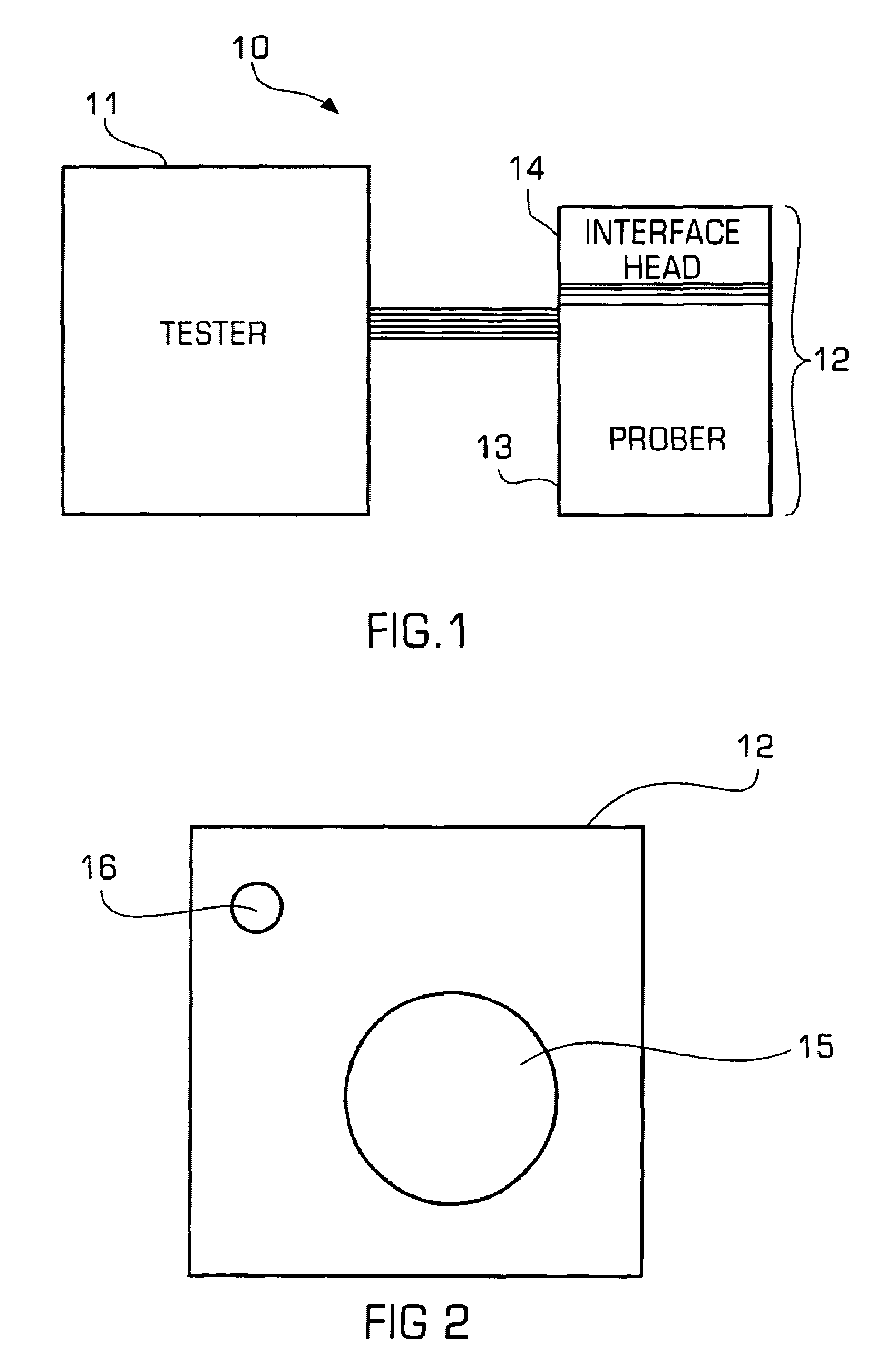Cleaning system, device and method
a cleaning system and polymer material technology, applied in the direction of cleaning process and apparatus, measurement device, instruments, etc., can solve the problems of increasing the cost of final products sold, reducing the quality of electrical circuits, and reducing the cleaning efficiency of working surfaces of polymer materials, so as to achieve the effect of improving the cleaning efficiency of working surfaces
- Summary
- Abstract
- Description
- Claims
- Application Information
AI Technical Summary
Benefits of technology
Problems solved by technology
Method used
Image
Examples
Embodiment Construction
[0026]The invention is particularly applicable to a cleaning medium for cleaning the probes in a prober and it is in this context that the invention will be described. It will be appreciated, however, that the device and method in accordance with the invention has greater utility, such as cleaning other types of semiconductor processing equipment. The cleaning method can also be used on an analyzer which is a metrology tool used in the routine maintenance of probe cards.
[0027]FIGS. 1 and 2 are diagrams illustrating a testing system 10 that may be cleaned using the cleaning medium in accordance with the invention. In particular, the system 10 may include a tester 11 electrically connected to a prober machine 12 that may actually apply the probes to the semiconductor wafer or die and test them. The prober machine 12 may further include a prober 13 and an interface head 14 as shown in FIG. 1. The prober machine 12 may also have an abrasion / sanding disk 16, which is typically used to bu...
PUM
 Login to View More
Login to View More Abstract
Description
Claims
Application Information
 Login to View More
Login to View More - R&D
- Intellectual Property
- Life Sciences
- Materials
- Tech Scout
- Unparalleled Data Quality
- Higher Quality Content
- 60% Fewer Hallucinations
Browse by: Latest US Patents, China's latest patents, Technical Efficacy Thesaurus, Application Domain, Technology Topic, Popular Technical Reports.
© 2025 PatSnap. All rights reserved.Legal|Privacy policy|Modern Slavery Act Transparency Statement|Sitemap|About US| Contact US: help@patsnap.com



